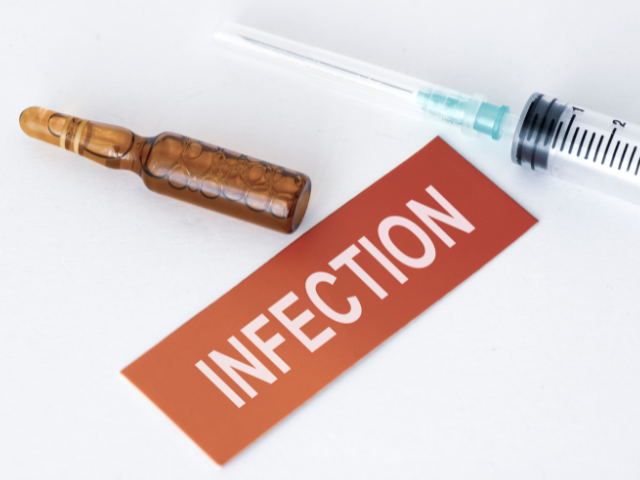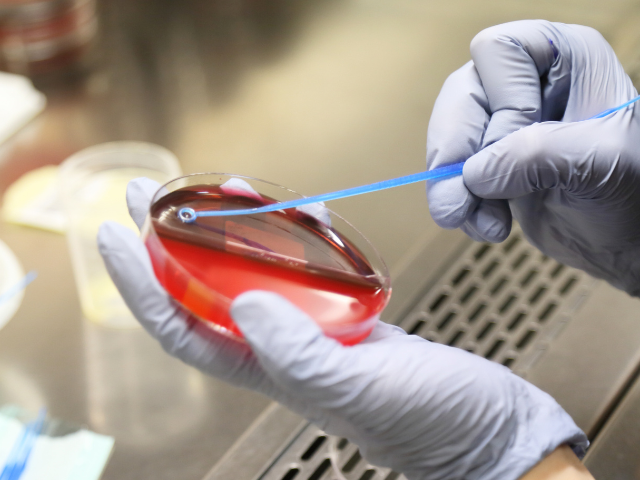Diagnosing Infective Endocarditis
Blood cultures, echocardiography, other imaging procedures, and clinical criteria can help diagnose the condition. Infective endocarditis is diagnosed using a combination of clinical, echocardiographic, microbiological, and pathologic characteristics evaluated with the Duke diagnostic criteria.
The primary blood culture criteria from the Duke diagnostic criteria include:
- Two blood cultures positive for typical organisms of endocarditis
- Blood cultures persistently positive for one of these organisms from vultures drawn more than 12 hours apart
- Three or more times separate positive cultures obtained at least one hour apart
The primary echocardiographic criteria from the Duke diagnostic criteria include:
- Echocardiogram positive for infective endocarditis, documented with oscillating intracardiac mass on a heart valve or supporting structures, in the path of regurgitant jets, or on implanted material without another anatomic explanation
- Cardiac abscess
- Development of new partial dehiscence of a prosthetic valve
- The onset of new valvular regurgitation
The minor Duke diagnostic criteria include:
- A predisposing heart condition or use of intravenous drug (IVDA)
- Fever (100.4 degrees Fahrenheit or higher)
- Vascular phenomena that include Janeway lesions or conjunctival hemorrhage, central arterial emboli, intracranial hemorrhage, mycotic aneurysm, and septic pulmonary infarcts
- Immunologic phenomena that include rheumatoid factor, glomerulonephritis, Roth spots, or Osler nodes
- Positive results of blood cultures but not meeting the significant criteria or serologic evidence of active infection with the organism consistent with infective endocarditis
- Echocardiogram results indicate infective endocarditis but do not meet the significant echocardiographic Duke criteria for infective endocarditis.
According to the modified Duke criteria, two primary criteria, one major and three minor criteria, or five minor criteria, should be met for the definitive diagnosis of endocarditis.
Assessment Tips for Suspect Patients with Infective Endocarditis
Detailed History: Ask patients with pre-existing cardiac abnormalities about recent dental procedures in the past three to six months. If they had any dental procedures, then ask which procedure and if bleeding occurred after it. Often, patients with acute infective endocarditis have a continuous complaint of fever, ranging from 103F to 104F. However, the patient gets a low-grade fever from 99F to 102F in subacute bacterial endocarditis.
Ask the patient about the presence of other symptoms such as fatigue, malaise, anorexia, night sweats, and weight loss.
Physical Examination
Patients with infective endocarditis appear acutely ill. Check their body temperature, dry mucus membranes, and diaphoresis. The conjunctivae, mucus membranes, and the upper extremities should be inspected for the presence of petechiae. Check their nail beds, fingers, and toes to rule out splinter hemorrhages and Osler nodes.
In patients with infective endocarditis, splenomegaly is common, so palpate the abdomen to check for it. Lastly, auscultate the heart to know about murmurs and tachycardia. In most patients with subacute infective endocarditis, a heart murmur is present, commonly mitral and aortic regurgitation. In contrast, it is typically absent in patients with acute infective endocarditis.
The Nurse’s Role in Treating Infective Endocarditis Patients
Most people at increased risk of infective endocarditis receive antibiotic therapy before, after, and during invasive procedures to avoid the occurrence of bacteremia. Tell them to complete the course as the physician prescribes and not to stop taking it before completion.
The risk of endocarditis is linked with procedures that involve teeth and gum manipulation, leading to bleeding, or procedures involving the gastrointestinal or genitourinary systems. Encourage them to report bleeding with any procedure, especially if they have valvular heart disease or prosthetic valves.
Patients who have developed congestive heart failure with infective endocarditis need supportive oxygen therapy, and management of acute renal failure with dialysis may be required. Counsel the patient for that, as it may be overwhelming for them to cope with the situation.
Refer the patient to the appropriate rehabilitation program and addiction consultation clinic if they have developed endocarditis due to IV drug abuse. Patients who do not respond to antibiotics or those who have developed infective endocarditis in a prosthetic valve may need to get the infected valve replaced surgically.
Treatment of Infective Endocarditis
Antibiotics are given depending on the causative organism to treat infective endocarditis. The following drugs are commonly used to treat infective endocarditis:
- Penicillin G is given as 2 million units IV q hours for four weeks. It helps treat penicillin-susceptible streptococcal infections in patients with subacute bacterial endocarditis. Patients allergic to penicillin can receive vancomycin.
- Other commonly used antibiotics are oxacillin, gentamicin, vancomycin, or tobramycin, given as 2g IV q hours, up to 5 mg/kg per day IV q 8 hours. They help treat acute bacterial endocarditis commonly caused by S.aureus and gram-negative bacilli.
- Acetaminophen is given at 650 mg every 4 to 6 hours to treat fever, joint pain, and muscle aches.
Discharge and Home Healthcare Guidelines
Patients should be educated about early detection and prevention tips to prevent the occurrence of infective endocarditis. Tell them to maintain oral hygiene and encourage them to inform healthcare providers, including dentists, about their endocarditis history. Patients should also take antibiotics properly as prescribed by the physician to prevent the subsequent occurrence of endocarditis.
Ensure that patients and their caregivers understand all medications, including their dose, action, route, adverse effects, and precautions. Explain that completing the antibiotic course is imperative as stopping can lead to antibiotic resistance, making the condition even worse and difficult to treat. Educate them about the common side effects of antibiotic therapy, such as yeast infection, gastrointestinal distress, skin rash, and sun sensitivity. Encourage them to seek medical attention promptly if they encounter any side effects.
Inform them about proper IV catheter site care and signs of infiltration.
Compel your patients to take their body temperature daily at the same time and take antipyretics as directed by the physician. Patients should report any signs of heart failure and embolization along with chills, fatigue, fever, weight loss, or malaise.









